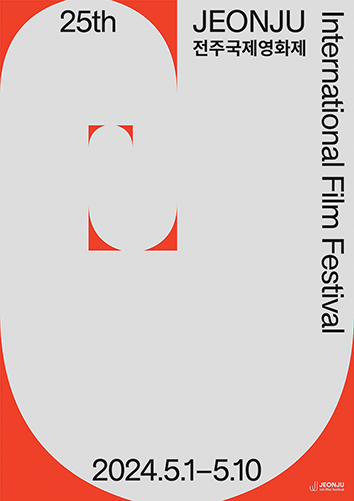Enough with the Coffee Shops Already!
Coffee Shop Overkill Reaches Epidemic Levels in Bongseon-dong
Written by William Urbanski.
Do you like a nice warm cup of coffee? Yes? Me, too. Do you need one after every fifty meters you walk? If so, then you should come to Bongseon-dong where on a single five-hundred-meter stretch of road there are no less than ten coffee shops. This is not including a certain side street where there are four coffee shops back-to-back-to-back-to-back. I think I speak for all of humanity when I say enough is enough of these coffee shops already.
The coffee shops in question are definitely not rinky-dink operations. They are full-fledged, fancy-dancy establishments with seating for at least fifty people each. Every single one of these will not hesitate to serve you up artisan coffee in a fancy cup alongside a tiny slice of diabetes-inducing cake that you can eat while vegging out on a comfy chair with your eyes glued to your smartphone and occasionally schmoozing with your bestie.
All issues about price, health, and lifestyle options aside, what really grinds my gears about this endless proliferation of coffee shops is that each and every one is a lazy excuse for a business idea, pure and simple. As well, instead of innovating, all they do is straight-up copy and paste the same old idea, flooding neighborhoods with generic, unnecessary businesses.
It is easy (and fun) to gripe about streets getting congested with these businesses, but further reflection and streamlined research (i.e., Google) reveals that not only is clustering of businesses nothing new and the subject of at least one well-known economic model, but there are compelling historical, social, and even religious precedents that say putting similar businesses that close together is just plain wrong.

A Tale of Two Pizza Places
The New York Times reported an incident from a few years ago that can only be described as the definitive display of business-copycat-syndrome. In a Jewish neighborhood of Manhattan, a pizza shop (let us call it “Pizza Shop B”) opened directly across the street from an established pizza restaurant that had been there for years (“Pizza Shop A”). Pizza Shop B basically copied A’s recipes, had much lower prices and was even alleged to be encouraging customers in line to come across the street. Now, even though B was within its legal rights to open and operate the business, it was clear as day what it was doing: trying to steal A’s customers. Pizza Shop A appealed to a rabbinical court, citing certain Jewish religious texts that prohibited unfair competition by a new and nearby business. Long story short, the tribunal issued a ruling, in Hebrew, and sided with A saying that the new pizza shop violated rules laid out in Jewish scripture. Whatever your views are on extralegal religious tribunals, what should be striking about this example is that there are clear historical and religious norms that prohibit replicating a business’s concept and appearance and then opening up across the street.
Business Clustering
Admittedly, similar businesses clustering together is nothing particularly new, but the first time it really stood out to me was on a visit to the magnificent Nami Island in Gyeonggi Province. There are two ways to reach Nami Island: by amazing zipline and by ferry, both of which are located at a harbor area is more or less a bottleneck with one road in and out. The harbor area is flush with all the usual businesses, such as convenience stores, and it even has some games and a bungee jump tower with a dubious safety record. This whole area is pretty compact (roughly a kilometer long) and what really stands out is the ridiculous number of takgalbi (marinated and grilled chicken) restaurants in the area. I kid you not, there have got to be ten almost-identical restaurants in the same place, all with similar menus and seating areas. When I asked my wife why they needed so many chicken joints in the same place, she said the area was well known for takgalbi, so everyone nationwide was aware that if they ever had a hankering for some roasted bird, they knew where to get it. Simply put, the area was known as a chicken hub (I cannot believe I just wrote those words). I will admit that there is a certain logic to this, but it still strikes me as businesses telling the customers what they want instead of the other way around.
Because I just could not let this whole thing go, I did some research on the matter (i.e., watched some YouTube videos) and came across a TED Talk video that explained business clustering pretty well. It used the example of two ice cream vendors on a beach. Assuming equal numbers of customers enter onto each part of the beach, the best place to place the ice cream carts would be equal distances from the middle. Now, if one day a vendor came early and positioned himself closer the middle, he would attract a disproportionate number of customers. What vendor number two has to do in this case is move his cart to get more customers. There is a little more to it than this, but the long story short is that this jockeying for position will continue until the vendors reach a point of stasis in the middle of the beach where they will, in theory, attract the same amount of customers. This location, in which each vendor cannot improve his position by moving his cart, is known as the Nash Equilibrium (Nash was the Nobel Prize-winning economist and mathematician who was the subject of the fantastic movie A Beautiful Mind, starring the bad person Russel Crowe).
This is all well and good and the economic logic seems feasible to me, but if we can take a break from theory and move back into the real world, we can see a bigger problem. When businesses encroach on each other, they do it to steal customers or prevent their competitors from “winning” and not to better serve the customer. The result of this is ten chicken restaurants on the same block.
Coffee Culture
The Nash Equilibrium comes about from businesses competing with each other. Where businesses finally settle is based more on stopping their competitors from gaining a competitive advantage rather than what is good for the customer. In the case of Bongseon-dong, the result is a dense concentration of similar businesses where the choices to the customer could be summed up as “Would you like coffee, coffee, or coffee?” Maybe one shop has a slightly more comfortable chair or a more appealing atmosphere, but the shops are all pretty much the same, which is why more shops does not really equal more choice and certainly does not benefit the customer or the ordinary citizen much at all, especially when the street is super-saturated with java peddlers. If anything, it just contributes to a feeling of congestion and blandness. The Nash Equilibrium can be contrasted with the Socially Optimal Solution, where businesses are evenly spaced out so that they are easily reachable by customers. But, attaining a Socially Optimal Solution requires cooperation and you know, nobody wants that.
There are those that say Korea has developed a “coffee culture,” but I would disagree for the simple reason that corporations stamping the cityscape with identical, cookie-cutter establishments that choke out innovative and unique establishments is not “culture.” It is a sign that communities are not being laid out with citizens’ best interests in mind.
The Economic Narrative
Even those that are not religious or superstitious follow some sort of narrative, and one of the strongest underlying narratives worldwide is that by following economic reasoning, and letting businesses compete freely, all people can enjoy better and more prosperous lives. Economics is a handy-dandy tool for explaining how and why money changes hands, but it is based fundamentally on the ideas that limitless growth is essential, more is better, and growth helps everyone by making the “pie” bigger. When something grows without limits, it is generally referred to as “cancer,” and reoccurring global events should make it clear that it is those on top, the already wealthy, who benefit disproportionally from economic growth. This idea that businesses work best when they are allowed to operate freely is also complete poppycock.
In The Great Delusion, Steven Stoll explains how, when economics first started being developed in earnest, they were modeled heavily on the existing fields of mathematics and physics. The Irish economist John Cairns (1825–1875) claimed that “political economy (i.e., economics) plainly belongs to the same class of sciences with mechanics, astronomy, optics, chemistry, electricity and, in general, all those physical sciences which have reached the inductive stage.” Amasa Walker even asserted in The Science of Wealth (1866) that “so far as political economy, as a science, is physical, depending on the forces and agencies of nature, it is above legislation.” That is to say, the first economists believed that they were uncovering “universal truths” that could be studied and applied to practical problems, much in the same way that Newton and Leibniz developed calculus to address the problem of people generally enjoying their lives. While these attitudes towards the immutable nature of economics have persisted, early economists erred in their assessments. As Stoll astutely points out, “Economists seized upon physics without understanding the full implication of the categories they clumsily translated into human action.”
Economics and physics are fundamentally different because the former describes a distinctly human phenomenon (the economic system) and the latter was parsed out by rigorous scientific methods, and exists independent of human thought or emotion. Otherwise put, early economics simply threw their big fancy theories (hypotheses, really) onto the existing conceptual template that had been established by physicists, because, hey, why not?
In the same way that the right to govern, which was once unquestionably thought to be the divine right of kings, morphed into the democratic systems that large parts of the world enjoy today, we should remember that the economic system is not something dependent on fate or determined the stars, but something that is subject to change.
In Conclusion
Like an onion, the foul vegetable that I hate, the phenomenon of too many coffee shops in my neighborhood has many layers. By considering the social, economic, and historical foundations on which these stores are based, we can more clearly understand the fractured thought process that goes into opening these shops. The people who at this very moment are, no doubt, scheming to open the next java joint in Bongseon-dong would do well to heed the advice of the French adage “Trop, c’est comme pas assez” (Too much is like not enough).
The Author
William Urbanski, managing editor of the Gwangju News, has an MA in international relations and cultural diplomacy. He is married to a wonderful Korean woman, always pays cash, and keeps all his receipts. Instagram: @will_il_gatto








